On the face of it, Spartans might have felt right at home living under the iron fist of the Third Reich given that this city-state—more than any other in the Greek world—- sacrificed individuality on the altar of authoritarianism. In addition to the institutionalized abuse it hurled on its prized male citizens, Sparta was notorious for licensed savagery against the much-maligned Helot class who they were bent on destroying. So, it comes as something of a surprise that a society primitive in its treatment of humans was in many ways out-and-out advanced in its treatment of women. Alas, it is no secret that even in “enlightened” ancient Greece, members of the second sex were relegated to the margins of society. But although Sparta—-also known as Lacedaemon—- joined other Greek city-states in deeming women unworthy of citizenship, it differed from them in one critical way: women had the right to own property. In fact, by the early fourth century BCE, Spartan women were believed to have owned as much as forty percent of their land. For this and many other such freedoms, a grumbling Aristotle attributes the license of Spartan women to the state’s eventual downfall and quips: “But what difference does it make whether women rule, or the rulers are ruled by women? The result is the same.”
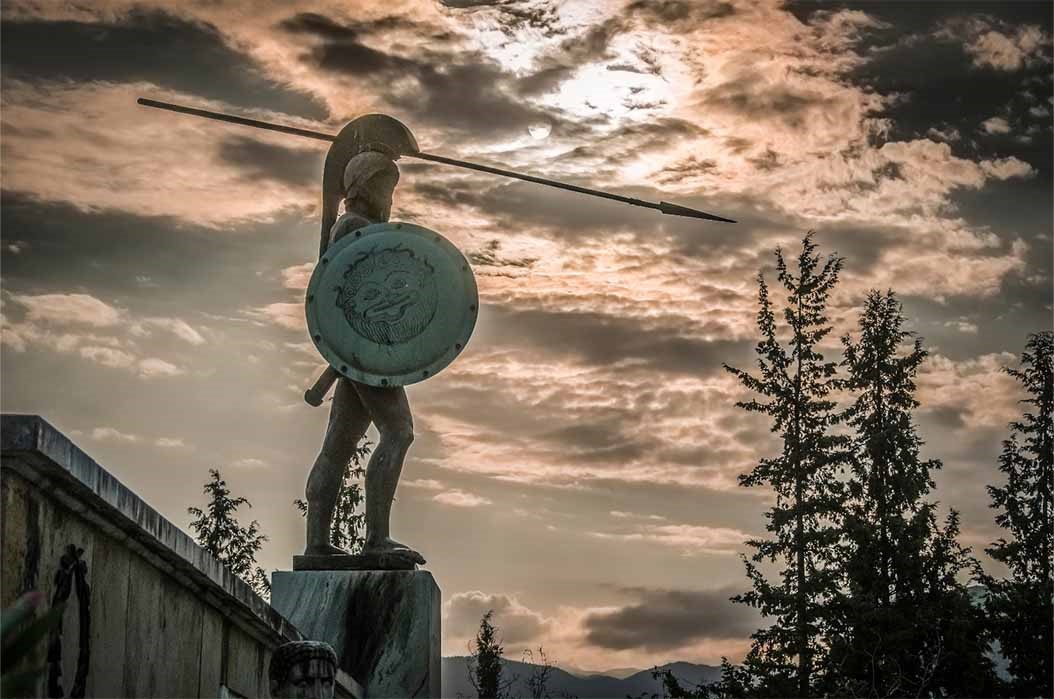
What could have induced Sparta to break from their Greek counterparts and give women authority over their lives? Before answering this fundamental question, it is important to understand how Sparta differed from other Greek city-states and to learn the reasons for it. First and foremost, Sparta was a warrior state predicated on a ready militia that was second to none. A diarchy, Sparta was ruled by two hereditary kings who shared power equally. Within the executive branch, the kings governed along with five ephors (overseers) who were the only elected positions within the state ruling for a term of one year. With little interaction from the outside world, Sparta was intensely insular and by most accounts considered a closed society—an individual’s rank at birth determined their rank at death. Nevertheless, by some definitions they were democratic; among its male citizens everyone was equal, referring to themselves as homoioi (the equal ones). The polis was divided into three primary social classes: the Spartans (or Spartiates) who were its male citizens, the Helots who were its serfs or slaves, and the Perioeci “dwellers around” who were neither as elevated as citizens nor as suppressed as slaves and lived within the Spartan territories. When economic commerce and trade were prohibited in Sparta during the Classical era (500-336 BCE), the Perioeci produced weapons and amour for Sparta’s vast military arsenal.
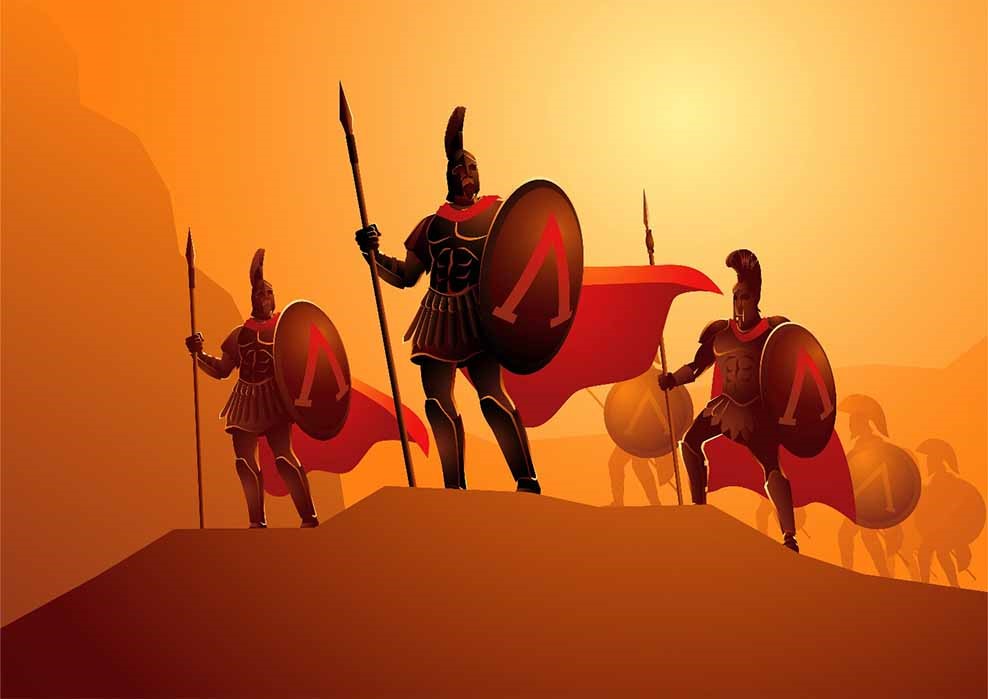
As one of the two most prominent city-states of the Greek world, Sparta has often been compared unfavorably to Athens. Athens gave the West its genius for democracy, architecture, theatrical arts, and philosophy, while Sparta— to the exclusion of nearly everything else—focused instead on physical training and martial might. Sparta’s chief preoccupation was to subdue rebellion from within its borders and repel invasion from outside of them.
Why were the Spartans obsessed with the notion of military supremacy? The watershed moment that impacted Sparta’s political philosophy and according to noted Hellenic scholar, Paul Cartledge, “transformed (Sparta) from a polis into a military police state” was their conquering then subduing the neighboring state of Messenia in the eighth century BCE. In a two-decades-long struggle, the eventual conquest of Messenia gave Sparta a territory rich in agricultural land, but the Spartans took something more than just the Messenian land. They enslaved the entire population of Messenia becoming the only Greek city-state to base its agricultural output solely on slave labor. Although slavery was widespread throughout the Greek world, Sparta brought it to a level never before realized. In other poleis, slaves were owned by individual citizens whereas in Sparta the slaves were the property of the polis and primarily assigned to work the state-owned farms. Outnumbering the Spartans ten to one, the denigration into captivity of the Messenians who had once been a free people produced a population of permanently enraged and disgruntled captives. The Spartans called the new enslaved class Helots. Musing on the hatred the Helots felt toward the Spartans was historian Xenophon (430-354 BCE) who reported that the Helots “would gladly eat the Spartans raw.” Indubitably, the Spartans were sitting on a veritable powder keg of their own creation.

Because the Helots would rise in rebellion numerous times over the centuries, the Spartans were justifiably paranoid about an aggrieved population in their borders who outnumbered them thus their top priority was to do everything possible to subdue the Helots. In other Greek city-states, when male citizens were not fighting, they were farming their land so vital was farming in the ancient world. But in Sparta, since all the farm work was done by the Helots, the male citizens changed their focus from farming part of the time to soldiering all of the time and fixated on brutally subduing the Helots whose agricultural labor was supporting them. In fact, the Spartan economy is often compared to the antebellum South. Like the South, the fear that an enraged slave laborer class could take arms against their Spartan overlords encouraged brutality against the Helots and drove the Spartans to be physically fit and battle-ready on a dime.
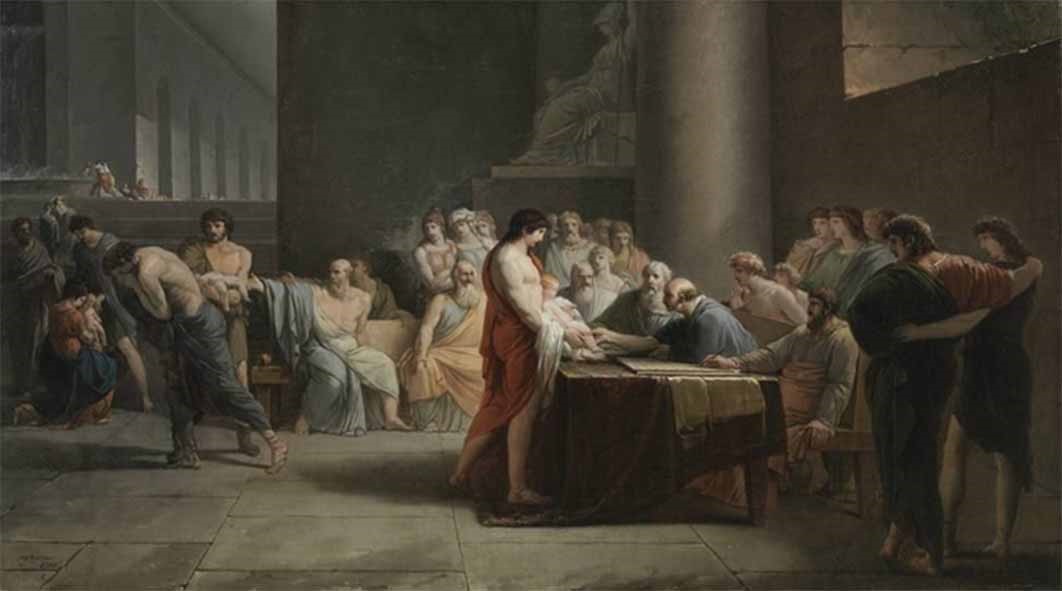
At this point, it is important to understand how critical physical fitness was to the Spartan regime. From the beginning, Sparta was no land for the feeble and weak—only the healthiest were allowed to live. Long before it would become “fashionable,” Sparta was a state that engaged in eugenics. To determine if a male infant was physically fit enough to live up to Sparta’s lofty standards, Plutarch writes about how the infants were brought before their tribal elders for inspection. Infants deemed physically inferior were exposed and tossed off a chasm at the foot of Mount Taygetus. It should be noted that infanticide was practiced by all Greek city-states to one degree or another. In other city-states, however, the decision to expose an infant was up to its parents— not the state. No coddling nor cooing— the toughening up of males began at infancy where Spartan mothers and nurses were known for their severity.
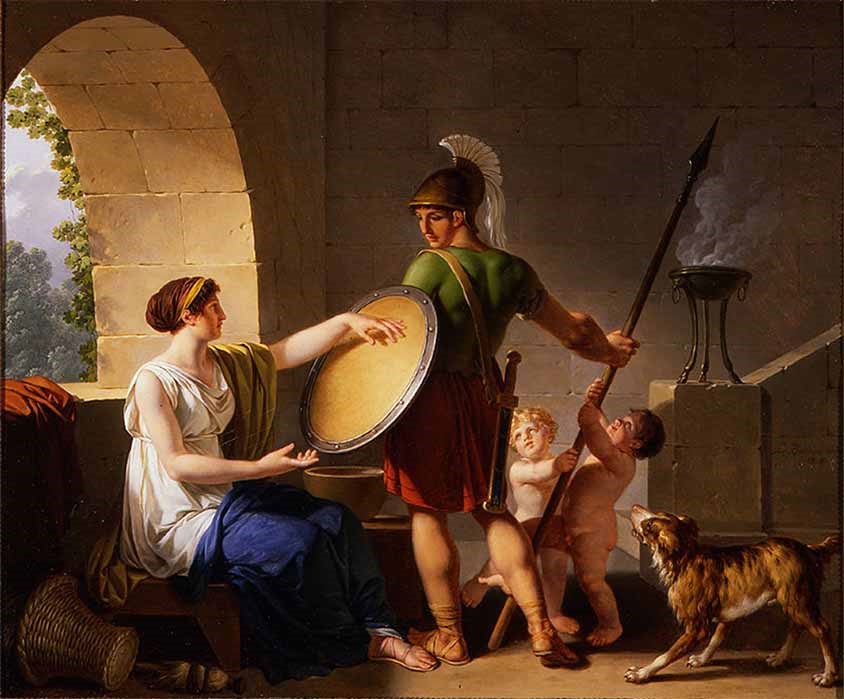
If a male infant were fortunate enough to attain the ripe old age of seven, he was conscripted into an intense military regiment that lasted until his twentieth birthday after which he was deemed a professional soldier spending his days either in battle or training for battle. Away from his home and family, the seven-year-old boy would undergo a rigorous training program called the agoge which focused on duty, discipline, and endurance. Walking barefoot regardless of weather conditions was one of a multitude of indignities thrust upon the boys. While it is beyond the scope of this paper to go into detail about the harsh conditions of their military training, one program was noteworthy in its barbarism. Krypteia or the secret service brigade was a group of select eighteen-year-olds ordered to live off the land and fend for themselves. The primary purpose of the krypteia was to terrorize and kill the much-besieged Helots. Imagine giving license to kill to a testosterone-fueled, half-starved eighteen-year-old boy. But it was not only the special elite who went on Helot-killing sprees. To keep a check on the Helot population, Plutarch writes about how the krypteia practice would become routine each autumn when the ephors called open season on the Helots and Spartans could kill Helots without fear of blood guilt. Grim was the life of a Helot, followed by that of a male citizen who would finally be free from the shackles of military bondage if they were among the fortunate few who lived to reach their sixtieth birthdays.
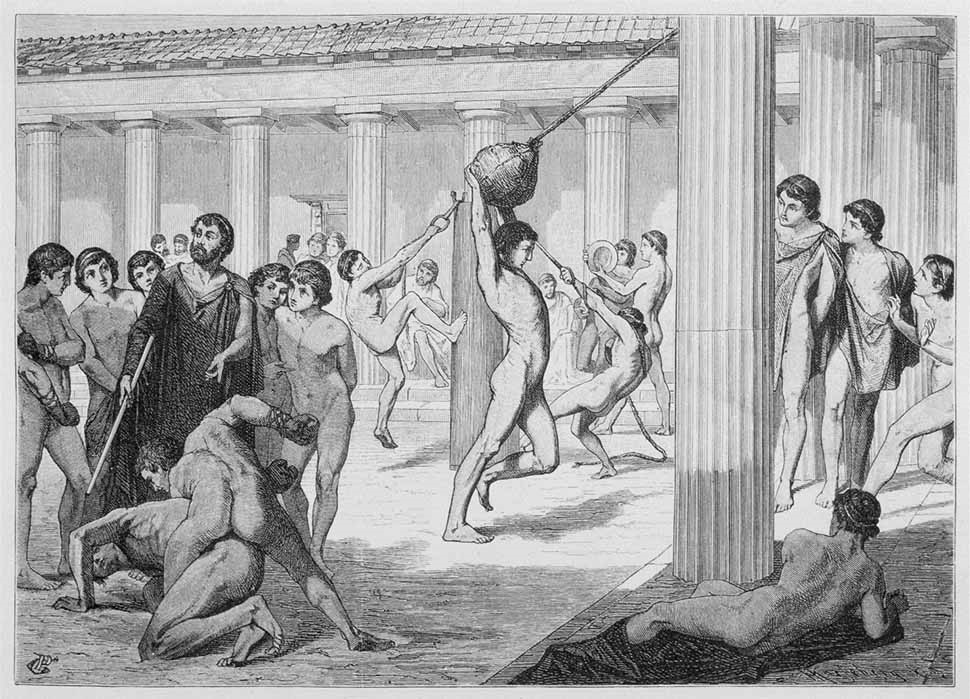
However, before the boys were conscripted into their military regiments, the girls trained right alongside them—-oftentimes in the nude. An important element in physical training, Spartans were notorious for donning scant clothing. Although the girls were sent home when the boys went off to military training, their training was far from over as their mothers continued their education in running, wrestling, horseback riding, discus, and javelin throwing. Throughout ancient Greece females received no public education, whereas in Sparta not only were the girls educated right alongside boys, but their education would often exceed that of the males. In addition to physical fitness, the girls were also educated in liberal arts where they learned reading, writing, music, dancing, and poetry.

Additionally, according to Plato and Plutarch, Spartan girls were trained in philosophical discourse and encouraged to make their views heard publicly as well as privately. In fact, Spartan women’s voices were so brazen that Plutarch compiled a book of their quotes. Conversely in much of the Greek world, it was deemed improper for respectable women to speak unless it was through their husbands. According to the prominent Athenian statesman, Pericles, the greatest honor a woman could have is to be least spoken of in men’s company—-clearly, Sparta did not adhere to his notions. While Spartan women far exceeded their Greek counterparts in education and erudition, the education of Spartan males was believed to have been well—spartan.
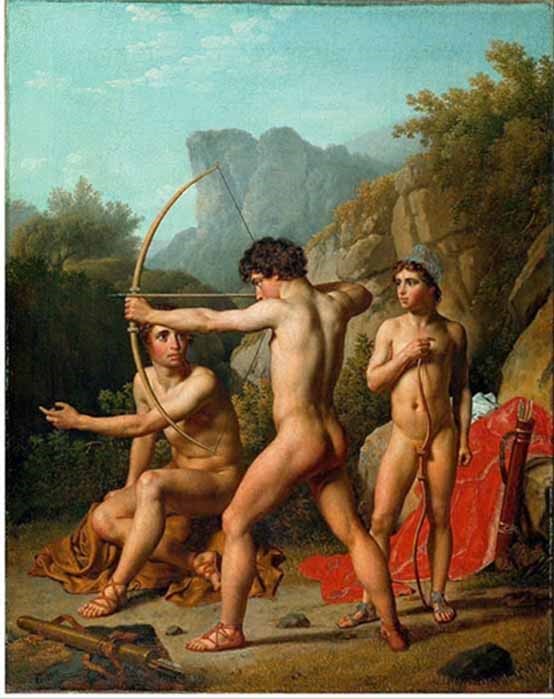
Male education was focused primarily on two disciplines: maintaining physical fitness and obedience to authority. Many scholars assert that because of their focus on martial arts, male citizens had little time to learn much of anything else making their education in rhetoric and liberal arts far weaker than that of Greek males elsewhere. This dearth of scholarship is aptly demonstrated in the lack of arts, theater, or notable architecture throughout Sparta. Moreover, some experts believe that some Spartan male citizens may have been wholly illiterate. Scholarship, however, was never the goal for male citizens. After an extreme and oftentimes brutal military education, men were tasked to become the best soldiers in the world thereby creating a military without compare.
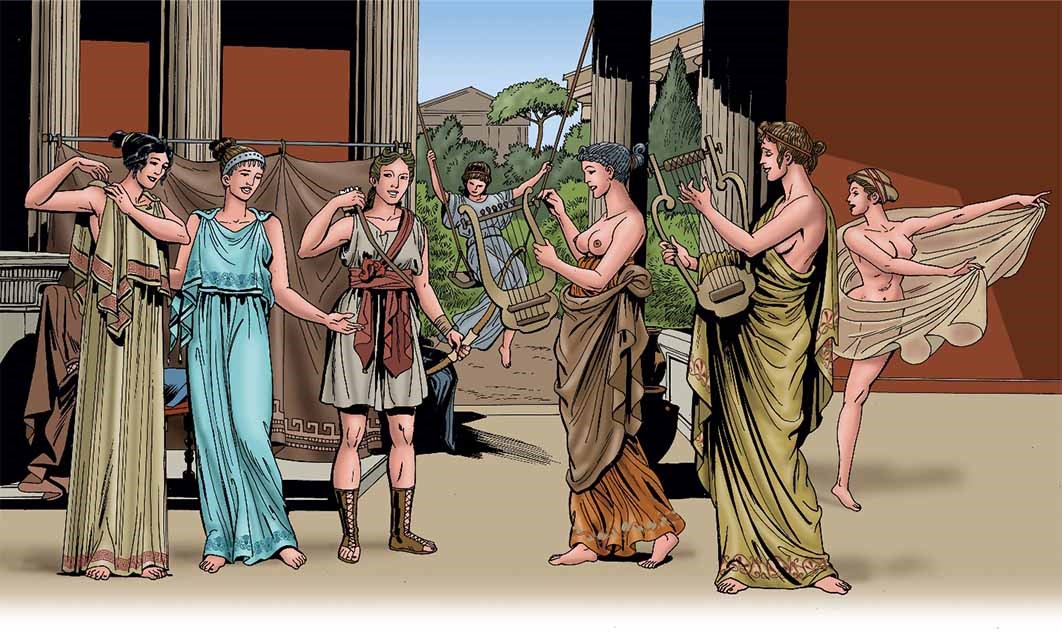
Similarly, for Spartan women, through a regimen of intense physical training, their goal was to reproduce the healthiest offspring in the world. Because of their emphasis on health and fitness, Spartan girls married in their late teens in contrast to their Greek counterparts who often married in prepubescence. The advanced thinking was that females gave birth more easily and produced healthier children when they themselves were not children. Unlike in other Greek poleis where the groom was typically fifteen or so years older than the bride, Spartan wives were typically the same age as their husbands. To be sure, in many ways the state of Sparta was before its time in such notions as prenatal care. Throughout the Greek world, a meager diet was imposed on the weaker sex often leading to such things as malnutrition and anemia—-hardly ideal conditions for mothers to be. Not so in Sparta where they understood that healthy women produced healthy children. Because of privations endured during intense military training, not only were women’s rations on par with men’s but Spartan wives often ate better than their husbands.
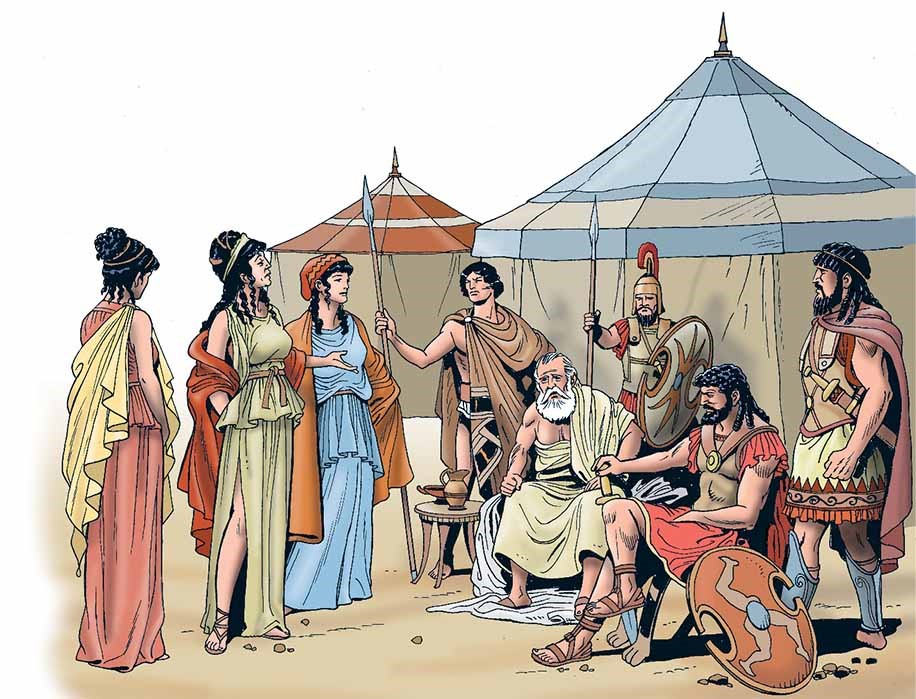
To encourage comradery, up until the age of thirty—even after getting married—the Spartans lived in the barracks with each other. Further, they were required to take their meals not with their wives but with each other—-in the messes—-until they were sixty. To be sure, homosexuality was not only prevalent amongst the Spartans— it was state-endorsed. The reasoning was that men would fight more bravely if they felt affection for each other. Conversely, newlyweds were discouraged from seeing each other. By building up the urge to procreate, it was supposed that a husband and wife would produce more robust progeny if they met infrequently. Until they reached the age of thirty, men were only allowed to visit their wives surreptitiously under cover of darkness on nights when no moon was out so as not to be seen by the authorities who could arrest them. Unsurprisingly, Sparta was a polis that always had problems maintaining its birth rates. In fact, they even had a term for it: oliganthropia which literally means “fewness of persons.”
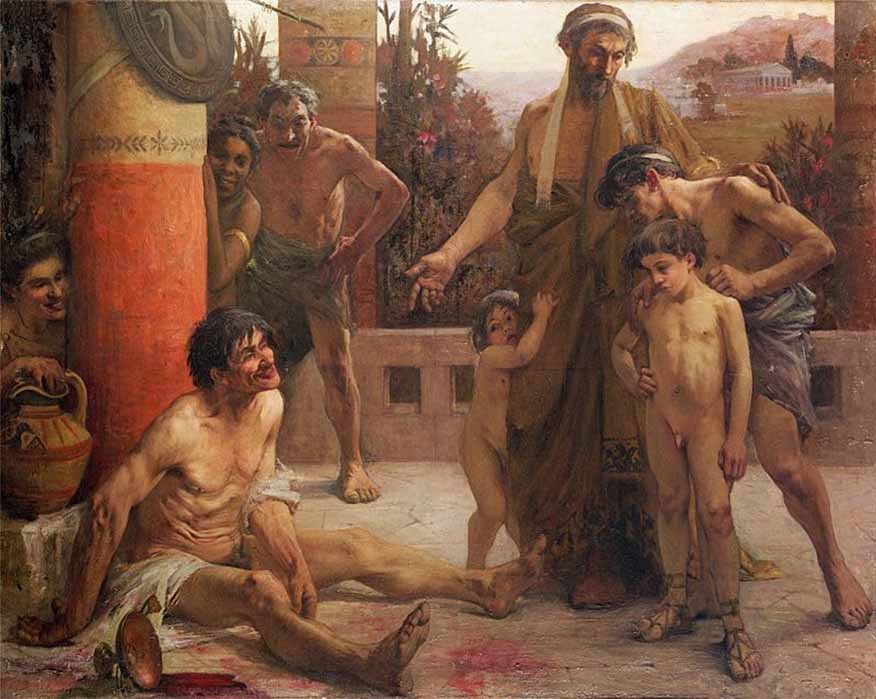
Because husbands were often away, wives became accustomed to overseeing the oikos or household. Although chiefly involved in farming, Helots were also engaged in housework thus even weaving (a common female occupation in ancient Greece) was left to the enslaved class. Utilizing slaves for domestic activities freed up Spartan women’s time to pursue other endeavors such as managing household farms. To be sure, women’s rights in Sparta began in earnest when men ceded farm work for military life leaving the responsibility of managing agricultural estates to their wives. On account of the greater responsibilities given to women it was in Sparta’s best interest to invest in their education, after all, it was intelligence rather than brute strength that put women on an equal footing with men. Education was imperative for women who made management decisions on their estates; decisions that male citizens in other city-states routinely made.
The management of the family farms by women led to a sea change within the Spartan government when they instituted Spartan’s Lycurgan reforms in the seventh century BCE allowing women to own land. Sparta was the only city-state in the Greek world to make this major conciliation with women giving them an economic standing similar to men. From the sixth century BCE down to the Persian Wars (492-449 BCE), Sparta was the most powerful of all Greek poleis—-for which their women played no small role. Eventually, Spartan women would become some of the wealthiest of all Greeks, owning nearly forty percent of their land. But perhaps as importantly, not only could Spartan women own, they could inherit. Unlike in other Greek poleis where widows would lose their family estate to the closest male relative if they had no sons; in Sparta, a wife could inherit her husband’s estate in its entirety. Thus, with rights similar to male citizens in other Greek poleis, and on account of the harsh treatment doled out to the Spartan male citizens, Sparta unconsciously promoted citizen-wives who lived longer on average than their beleaguered husbands—-in contrast to the rest of the Greek world where the mortality rate for women was higher than it was for men.
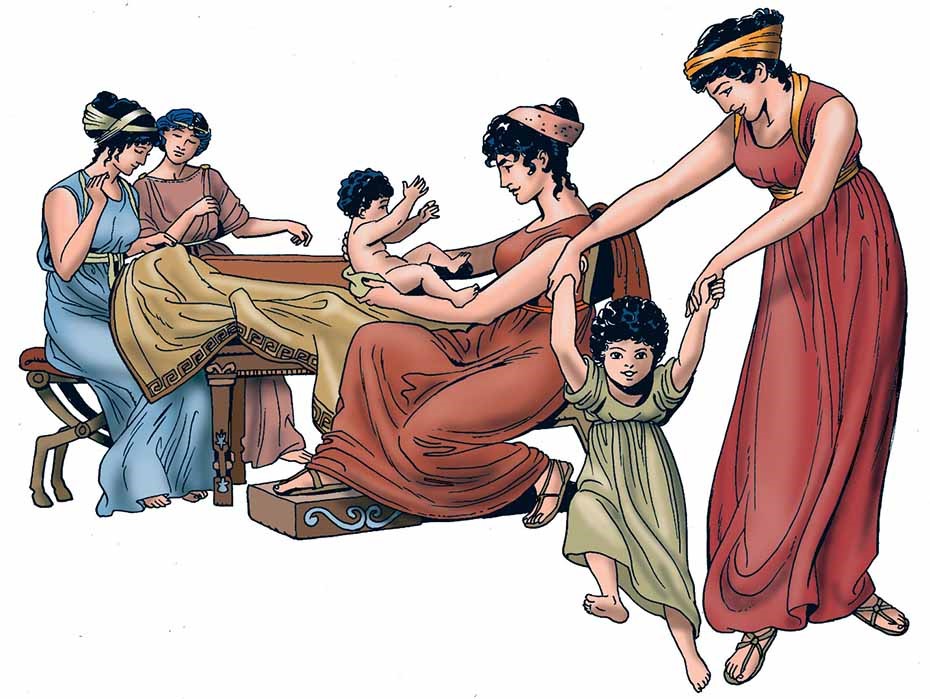
Since Spartan females outlived males, they outnumbered them thus because of the imbalance it was not uncommon for fertile wives to be shared amongst Spartan men. In a process known as “wife sharing” (or “husband doubling”), a married man could allow another man to father his wife’s offspring; the children from the new union would belong to the second man. In other Greek city-states, the strength of the polis rested on the strength of the household or oikos thus the chastity of the wife was deemed all-important. Whereas in Sparta, the chastity of wives took a back seat to the healthy offspring she could produce. The sharing of a wife’s reproductive potential was most commonly found in households where the wife was known to produce healthy children. This was yet another practice in which women reaped benefits. Not only were women in charge of their primary oikos but now they had access and authority over the oikos of another male citizen with whom they reproduced. Increasing the population with stronger, healthier progeny was a long-term Spartan goal thus “wife sharing” was a way for Sparta to control reproduction amongst its citizenry. Along these lines, whereas in other poleis adulterous wives were at best driven out of their oikos, at worst sold into slavery, in Sparta adultery was not even sufficient cause for divorce nor did it threaten a woman’s right to own property. Yet despite their best efforts to increase population oliganthropia would rear its ugly head time and again leading to Sparta’s eventual decline. According to Cartledge, by the early fourth century BCE, Sparta’s population was one-fifth of what it had been two hundred years prior.
Some scholars argue that a big reason for the population decline was due to women’s emancipation. Because Spartan women were involved in activities beyond mothering, there was an opportunity cost for raising children thus their incentives for bearing them were greatly diminished. In her book Spartan Women, Classical and Gender studies professor Sarah Pomeroy reports that ancient historians had long speculated that one of the reasons for the low birth rate in Sparta was because Spartan women engaged in contraceptive practices. With agency not seen in their Greek counterparts, did Spartan women determine how fertile they wanted to be? While women may have borne some of the responsibility for low-birth rate, doubtless more could be cast on Sparta’s brutal focus on military might and harsh segregation of the sexes with little or no regard for human sentiment.

Without the manpower to maintain its military preeminence Sparta lost its conquered lands in the fourth century BCE during the third Messenian war. At long last, the Messenians (Helots) were free from their despotic tormenters, but they were not alone in liberation—-their tormenters were liberated as well. No longer soldiering to the exclusion of everything else, the Spartans were released from their hypervigilance of and paranoia about the Helot community. They could now return to their family farms engaging in military obligations for only part of the year— just as male citizens did elsewhere in the Greek world. Nevertheless, as women were the unintended beneficiaries of the slaveholding state, once Sparta lost its army of slaves, the women were no longer in charge. Eventually Spartan women lost their ability to own and inherit property, reluctantly trading emancipation for the secluded and silent life of an average Greek citizen-wife.
It may seem contrary to modern sensibilities that Greeks the world over respected Sparta for its virtues such as integrity and honor; theoretical concepts which define a polis like equality and unity were magnified in Sparta which was considered by many to be an idealized state. Likewise, Spartans were admired for their sense of duty, loyalty, and devotion to their city-state. Better to die than to be disgraced, the Spartans were famous for their incomparable bravery. In fact, admiration was especially felt for Spartans by the fifth through fourth century philosophers, particularly Plato and Aristotle who not only praised their economic forbearance and adherence to law but modeled their notion of an ideal polis on the city-state of Sparta. Forasmuch as Aristotle praised Sparta, however, he was not alone in casting blame for Sparta’s downfall on its liberated women. Over the years, while many have looked to women for Sparta’s decline, often forgotten is the contribution they made to Sparta’s success. If not for women administering and managing the family estates, their husbands could not have devoted their lives to the military thus would not have been able to retain Messenia–their major stronghold. Indeed, Sparta would never have become the preeminent military power—–of almost mythological proportion—- if not for the liberation of its women.
